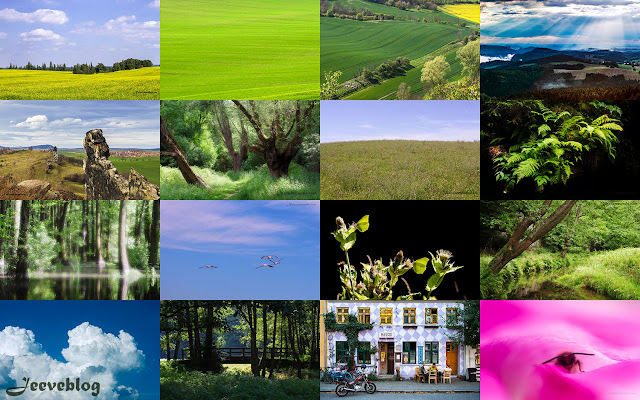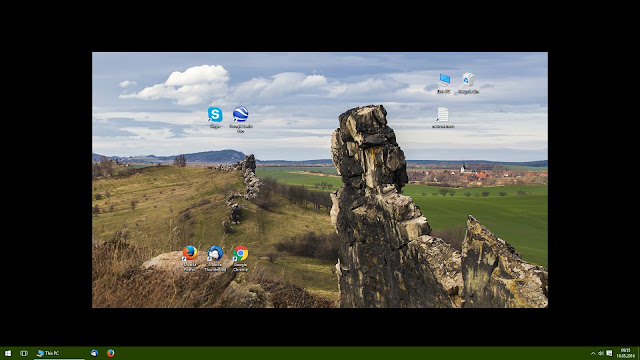Imagine that you are waiting in your car for someone, and suddenly a fly walks over the front window. You see the fly, but also a building in the background. It seems like a giant fly that is walking over this building with doors and windows. You imagine that? We could call this a 'fly transit'. Now imagine that the front window is 5 meters away from you. You still see the fly walking over the building but it looks pretty small.
The first situation symbolizes the Venus transit, and the second the Mercury transit because Venus is much closer to Earth than Mercury. The big difference is that these planets do not walk over a window. They just seem to hang in space and turn around the Sun. They have a little higher velocity, but much shorter paths around the Sun (orbits). This is why they turn in fewer days around the Sun, and we can see them moving across the Sun from time to time. Wow! Imagine Earth, Venus and the Sun 'hanging' in space and turning around each other. The gravity of the Sun is the only thing preventing us from floating away! These transits are a beautiful and visible proof that we, and other planets, turn around the Sun.

Mercury transit 2016 (May 9)
The big spot is a sunspot and stays where it is. The second -very small- dot is Mercury and moves between these three photos that I took during the several hours of the transit from middle left to lower right. Mercury transits occur quite often (13-14 times a century), but due to different angle of the orbit path, it can also pass the earth without moving between us and the sun (higher or lower). The next transits are in 2019 and 2032. Mercury moves with about 50 km/s around the sun in 88 Days (Earth: 30 km/s in 365 days). It is about 60 million km from the Sun
(but varying because of an elliptic path) and about
77 million km from Earth . It is also quite small, roughly 5000 km in diameter compared to Earth with 13000 km.

Venus transit 2004 (June 8)
I took this series with my analog equipment in 2004. Venus appears much bigger than Mercury, just like the fly on the window direct in front of you. I was lucky to observe it so nicely! The 2012 Venus transit was badly visible due to clouds and for the next one we have to wait until 2117 and 2125. Venus transits occur in pairs with 8 years distance, because 13 Venus turns around the Sun is almost exactly 8 Earth turns. 8 Years later, they miss each other because Venus is slightly too fast and orbit tracks have a different angle. In the last picture the 'black drop effect' can be seen: Venus and the Sun visually merge together, instead of two circles perfectly laying on top of each other. This effect was long thought to be linked to Venus' atmosphere, but in 2004 so many picture were be taken around the world that this effect is now thought to be caused by irregularities in the earth's atmosphere and by lower quality optics. Remember that the previous transits were in 1874 and in 1882 and the first few picture were taken! Without knowing, one of the photographers back than, Jules Janssen, wrote history by making the first 'movie'. In 1874 he made a series of Venus transit photos on a wheel, just like the first stop-motion pictures with moving animals made by Eadweard Muybridge in 1878. Notice that they were both scientists trying to documents something very accurately.
Venus moves with about 35 km/s around the sun in 225 Days (Earth: 30
km/s in 365 days). It is about 108 million km from the Sun and about 38
million km from Earth (closest distance, at transit). It is just a little smaller than Earth, roughly 12000 km in diameter (Earth: 13000). For who wants to know: Mercury and Venus can transit the sun at the same time, but this happens not so often, the next time is in the year 69163.
Science and transits
The early observations of Venus transits in 1639, 1761, 1769,1874 and 1882 were used to estimate the distance between Earth and Venus and to the Sun (by
solar parallax). If you observe the transit from the northern hemisphere and the southern hemisphere (with a known distance between these points), both transits appear slightly moved up and down to each other on the sun, but measuring this vertical shift appeared to be too inaccurate. The following step was to measure the exact time between start and end of the transits, which is shorter when the transit is lower on the sun. This served a more accurate estimation of the distance between both paths. However, the start and end time were still inaccurate because of the 'black drop effect' in the observation.
The Venus transit of 2012 was used to observe how light properties change when a planet moves in front of the sun. This data is useful to improve the search for exoplanets. Exoplanets are mainly found by looking at stars and changes in the light of stars ("a big planet now moves in front of the star").

Viewing
There are only two safe ways to observe this phenomenon yourself; with approved eclipse glasses directly or by projection on a cardboard. Everything else can damage your eyes! Don 't look into the Sun directly! Sunglasses and welding masks are not safe, neither are the combination of eclipse glasses and binoculars.
Photography
For the pictures of Mercury I used my Canon EOS 7D, a Canon EF 75-300 (1:4-5.6 III) Zoom lens and a Kenko Teleplus 1.4x converter, making 420 mm in total. I used cheap Lumifol foil in two layers to darken the sun. This is a kind of reflecting foil which has microscopic holes in it, reducing the light substantially. This foil is not safe for viewing, since it has no additional layer reflecting UV and IR waves. So I never used the viewfinder for viewing during, but used the locked up mirror instead. The result is, despite tripod and locked up mirror, not perfect. At the same time still satisfying.
NASA can do better, of course
https://www.youtube.com/watch?v=AhWMOkrzKzs




















































